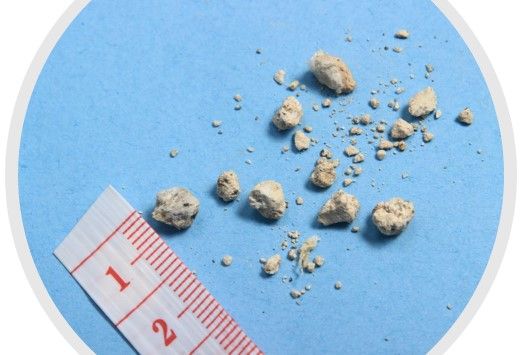- Clinical Technology
- Adult Immunization
- Hepatology
- Pediatric Immunization
- Screening
- Psychiatry
- Allergy
- Women's Health
- Cardiology
- Pediatrics
- Dermatology
- Endocrinology
- Pain Management
- Gastroenterology
- Infectious Disease
- Obesity Medicine
- Rheumatology
- Nephrology
- Neurology
- Pulmonology
Empagliflozin Could Reduce Risk of Kidney Stones in Patients with Type 2 Diabetes
Empagliflozin was associated with a nearly 40% reduced risk of incident renal stone disease vs placebo in a large analysis of data pooled from randomized clinical trials.
©Om Yas/adobe stock

Empagliflozin, the sodium-glucose contransporter-2 (SGLT-2) inhibitor, may be an effective therapy to prevent kidney stones in patients with type 2 diabetes (T2D), according to research findings presented at the Endocrine Society’s annual meeting (ENDO 2022), held June 11-14, 2022.
The large pooled analysis of data from 20 randomized controlled trials with the drug found empagliflozin, compared with placebo, reduced incidence of nephrolithiasis by approximately 40%.
“While we do not know the precise mechanism underlying this benefit," the findings mean that empagliflozin may potentially find yet another indication under the umbrella of renal protection, said lead researcher Priyadarshini Balasubramanian, MD, of the Yale School of Medicine in New Haven, Conn, in a statement from Yale.
As context for the study, Balasubramanian and colleagues cite a large observational study showing “a striking hazard ratio” for incident and recurrent renal stone disease in patients treated with SGLT-2 inhibitors vs those treated with glucagon-like peptide-1 mimetics. While the findings were “provocative,” authors note, they were also prone to bias given the retrospective design of the study.
The international research team conducted its analysis of the potential prophylactic effects of empagliflozin using existing data from recently published randomized controlled clinical trials.
Through literature search, investigators identified 20 phase 1-4 randomized, placebo-controlled trials resulting in data pooled from 15 081 patients with T2D. Of these 10 177 were treated with empagliflozin and 4904 with placebo. Using a predefined group of MedDRA codes investigators captured urolithiasis as adverse events, ie, nephrolithiasis, renal colic, ureterolithiasis, calculus bladder, calculus urinary, calculus urethral, and nephrocalcinosis.
Balasubramanian et al report the median time of exposure to the study drug was 549 days and to placebo 543 days. Just under half of participants (46.5%) of patients were from the EMPA-REG OUTCOME trial of empagliflozin which had the longest median treatment exposure at 2.6 years. At baseline, they point out, 6 patients in the empagliflozin group and 3 in the placebo group had a reported history of kidney stones; only 1 of these 9 patients had a recurrent event during the study follow-up period.
At baseline, 6 patients in the empagliflozin group and 3 in the placebo group had a reported history of kidney stones; only 1 of these 9 patients had a recurrent event during the study follow-up period.
The team identified 183 incident urolithiasis events during follow-up, with 79 occurring in the placebo group and 104 in the pooled empagliflozin group, for calculated annual incidence rates of 1.01 and 0.63 events per 100 patient-years, respectively.
When they compared incidence rates between the empagliflozin- and placebo-exposed groups, the incidence rate ratio (IRR) was 0.64 (95% CI, 0.48-0.86) favoring empagliflozin over placebo for reduced risk of nephrolithiasis. Results of a sensitivity analysis for which adverse events were restricted to nephrolithiasis, ureterolithiasis, calculus bladder, calculus urinary, calculus urethral, yielded similar results for empagliflozin (IRR, 0.62 [95% CI, 0.45-0.85]).
While the authors have noted that further study is required to characterize the mechanisms underlying this protective effect, they suggest one may involve the “altered lithogenic profile of the urine.”
Balasubramanian and her colleagues call for randomized prospective clinical trials to confirm their observations in individuals both with and without T2D, similar to follow-up SGLT-2 inhibitor investigations in patients with heart failure and chronic kidney disease.
Reference: Balasubramanian P, Wanner C, Ferreira JP, et al. Empagliflozin and decreased risk of nephrolithiasis: a potential new role for SGLT2 inhibition? J Clin Endocrinol Metab. 2022:107:e3003-33007.
